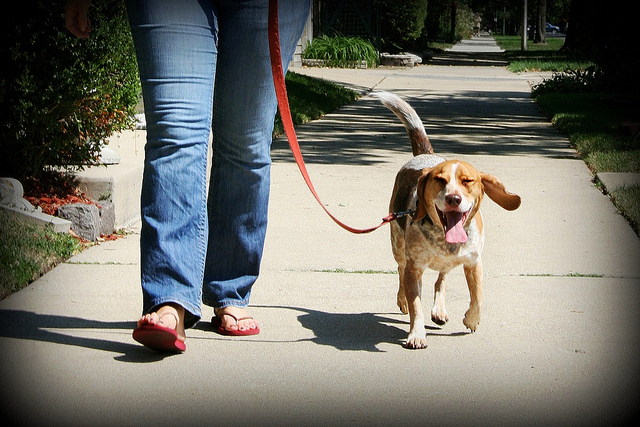August 6, 2013
Ever wonder how much exercise your dog really needs? Is it a help or a hindrance? And what environment is best for running them?

It’s August.
How is it already the eighth month of the year? Summer is nearly over and my boarding clients are already setting and sending their overnight requests for November and December. How time flies!
I have missed you. For those that didn’t realize it, I took some time off from blogging. July was something! A lot was happening personally and professionally and I’ll be honest: it was super hard to sit down and write. But I’m back and happy to be here!
For you newbies (And there are many of you! Welcome!) Rover-Time’s blog is all about its readers growing a personal relationship with our business. It highlights are expertise, our humor, and our favorite small businesses helping out the pet community.
In this week’s post I’m closing out a series I started ages ago. Let’s chat.
Ever wonder how much exercise your dog really needs? Is it a help or a hindrance? And what environment is best for running them?
Planning daily exercise for all dogs is important for maintaining general health and behavioral well-being. Every dog, no matter the breed, is an individual and it’s good to really know and be observant of who you’re living with. The important question is how much is enough vs. how much is too much?
Not all dogs – purebreds or mixed – are built to win competitions, but just about any breed can engage in and enjoy activities such as ball, agility and more, especially with a passionate owner. Sporting breeds do tend to be more active and need more exercise to be happy and stay fit.
Other breeds are not built for aggressive aerobic activity. Specifically, English and French bulldogs, pugs, Boston terriers, and others that have compressed faces. These guys are very susceptible to overheating and life-threatening heat stroke, if they are over exercised, even on mildly sunny or humid days. Overexertion of any kind, especially on a hot day, can be life threatening.
Even in older dogs, limited or controlled exercise is important. For dogs with hip, knee, spinal-arthritis conditions or obesity concerns, minimal-impact exercise, such as swimming, is highly recommended.
If a place to swim isn’t convenient, then walking – not running – is generally low impact and safe. Just don’t overdo it. Take short walks first, and gradually increase the distance. After exercise, gentle massage of the back and legs, and gentle flexing and extending of the leg joints, will help.
Allow your dog to exercise to the degree it seems comfortable, that is, most dogs will give you signals when they’re tired or need rest. So never force your dog to keep going. Adult dogs generally have matured enough to know when their bodies are hot and need to stop. If your dog is dropping behind, slowing down, sitting down, panting heavily, then take a break.
Only start the exercise again when your dog indicates he wants to do more. Be sure to provide fresh water and a place for the dog to get out of direct sunlight if it’s a hot or humid day.
If your dog is stiff or in pain the day after exercise, remember to allow enough rest for him to return to normal and limit the duration next time out.
Choosing the right place to exercise your dog is equally important.
Like your own feet, your dog’s feet are extremely sensitive, full of nerve endings and have enormous blood supply. Treat his feet like your own, with consideration for hot, abrasive surfaces such as pavement and sidewalks on sunny days, or rocky, wooded, off-road terrain. Always work your dog up gradually to new surfaces. With repeated activity on a harder surface, your dog’s foot pads will thicken and toughen, making them more resilient.
Be careful though, because the opposite is also true: reducing exercise or changing to softer terrain exclusively, such as grass vs. sidewalk, will gradually cause you dog’s foot pads to soften.
Lets continue the conversation below! I want to hear from you.
- Where are you favorite places to exercise with your dog and why?
- What do you bring with and what do you look for to keep your dog safe?
Next week (god willing) I will write again! For now, thanks for reading and do share with your friends and fellow dog fans!
Image by Sera Hayes

Recent Comments